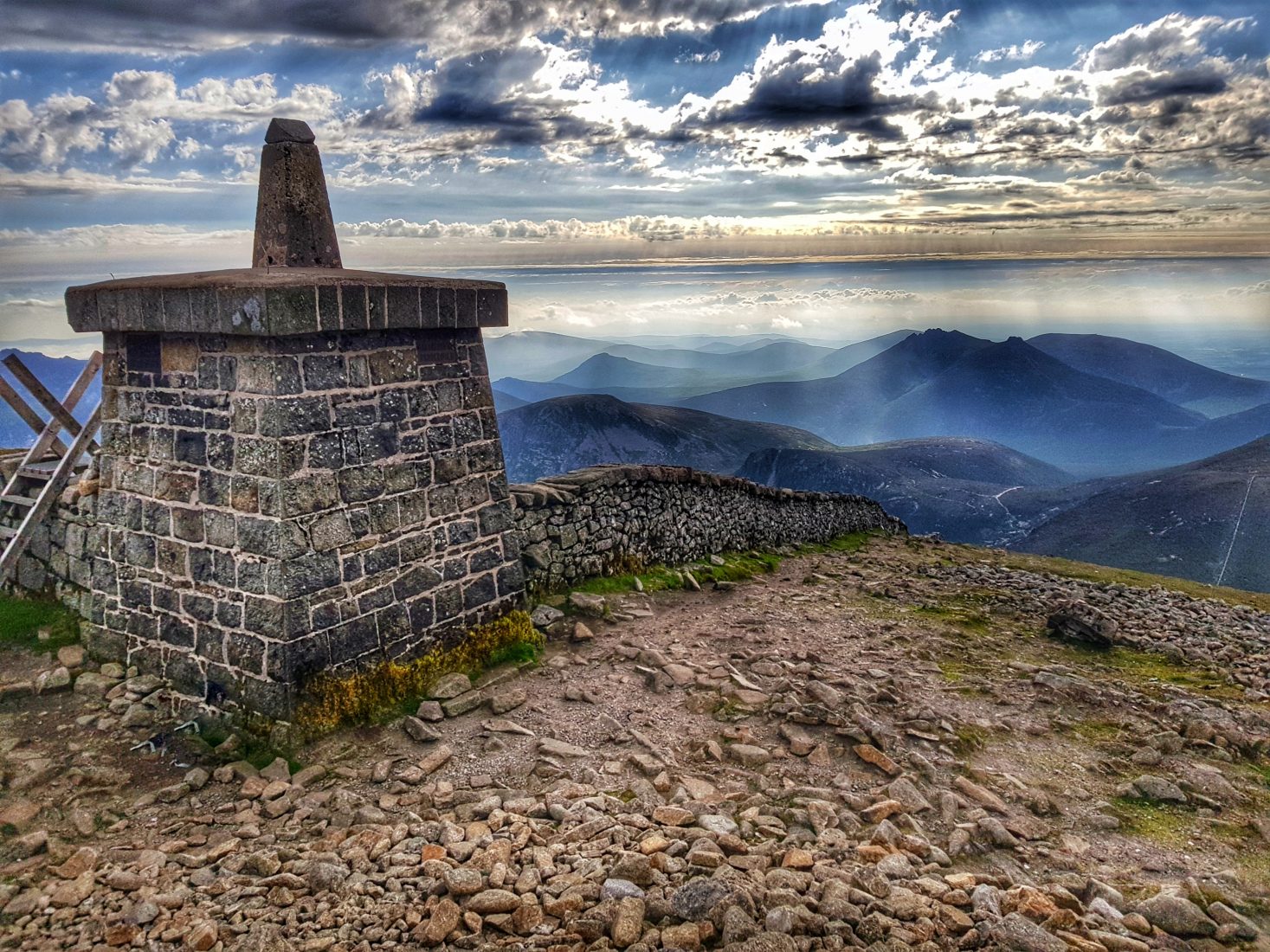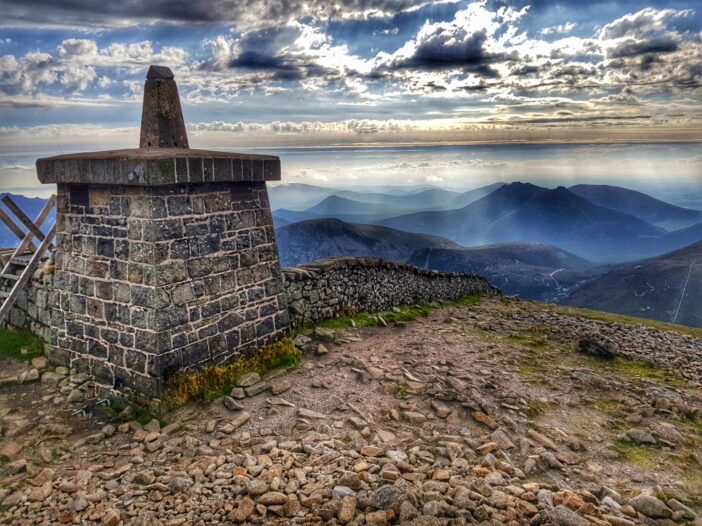Nestled in County Down, Northern Ireland, the Mourne Mountains are a hiker’s paradise. At the heart of this range lies the Mourne Wall, a 22-mile dry-stone wall stretching across 15 summits. Originally constructed to delineate the water catchment area for the Silent Valley Reservoir, this impressive structure offers a challenging yet rewarding hiking experience known as the Mourne Wall Challenge. This guide will provide you with all the necessary information to successfully undertake this adventure.
Preparing for the Hike
1. Fitness and Training
The Mourne Wall Challenge is demanding, requiring good physical fitness and stamina. Before embarking on this hike, engage in regular cardio workouts, strength training, and hill walking. Practice hikes on uneven terrain will prepare your legs for the varied surfaces you’ll encounter.
2. Gear and Clothing
Proper gear is essential for a successful hike:
- Footwear: Sturdy, waterproof hiking boots with good ankle support are crucial.
- Clothing: Layering is key. Start with moisture-wicking base layers, add insulating mid-layers, and finish with a waterproof and windproof outer layer. Don’t forget a hat and gloves.
- Backpack: A comfortable, well-fitted backpack with a capacity of 20-30 liters should suffice for carrying essentials.
- Navigation Tools: Bring a detailed map of the Mourne Mountains, a compass, and a GPS device or smartphone with offline maps.
- Other Essentials: Pack plenty of water, high-energy snacks, a first-aid kit, a headlamp, and a whistle for emergencies.

Route Overview
The Mourne Wall Challenge can be tackled in various ways, but a popular approach is to start and finish at the Silent Valley Mountain Park. The route covers 15 peaks, including some of the highest in the range.
Major Summits Along the Route:
- Slieve Binnian (747m)
- Slieve Lamagan (704m)
- Slieve Donard (850m)
- Slieve Commedagh (767m)
- Slieve Meelbeg (708m)
- Slieve Meelmore (704m)
- Slieve Bearnagh (739m)
- Slieve Muck (674m)
Detailed Itinerary
Day 1: Silent Valley to Slieve Binnian
- Distance: 7 miles
- Elevation Gain: 700m
- Highlights: Begin at the Silent Valley Mountain Park. The initial section is relatively gentle, but the ascent to Slieve Binnian is steep. The summit offers spectacular views of the surrounding mountains and the sea.

Day 2: Slieve Binnian to Slieve Donard
- Distance: 10 miles
- Elevation Gain: 850m
- Highlights: This section includes the challenging ascents of Slieve Lamagan and Slieve Donard, the highest peak in Northern Ireland. The views from Slieve Donard’s summit are panoramic, stretching as far as the Isle of Man on a clear day.
Day 3: Slieve Donard to Slieve Muck and Back to Silent Valley
- Distance: 5 miles
- Elevation Gain: 500m
- Highlights: The final day includes the peaks of Slieve Commedagh, Slieve Meelbeg, and Slieve Meelmore. The descent from Slieve Muck back to the Silent Valley is a welcome relief after the strenuous climbs.
Tips for a Successful Hike
1. Start Early
Begin your hike early in the morning to ensure you have ample daylight to complete each section. This is particularly important in the shorter days of autumn and winter.
Stay hydrated by drinking water regularly. Carry at least 2 liters of water and refill at streams where possible. Pack high-energy foods like nuts, dried fruits, energy bars, and sandwiches. Eating small, frequent snacks helps maintain energy levels.
3. Pace Yourself
The Mourne Wall Challenge is a marathon, not a sprint. Maintain a steady, comfortable pace to conserve energy for the long haul. Take regular breaks to rest, hydrate, and enjoy the scenery.
4. Weather Awareness
The weather in the Mourne Mountains can be unpredictable. Check the forecast before your hike and be prepared for sudden changes. Carrying waterproof gear and an emergency shelter can be lifesaving in adverse conditions.
5. Navigation
While the Mourne Wall itself is a useful navigation aid, fog and poor visibility can make route-finding challenging. Ensure you are proficient with a map and compass, and don’t rely solely on electronic devices.

Flora and Fauna
The Mourne Mountains are home to a diverse array of flora and fauna. As you hike, keep an eye out for:
- Birds: Red grouse, peregrine falcons, and ravens are commonly seen.
- Mammals: You might spot Irish hares, red deer, and foxes.
- Plants: Heather, bilberry, and various types of mosses and lichens blanket the landscape.
Conservation and Leave No Trace
The Mourne Mountains are a protected area, and it’s essential to minimize your impact on this pristine environment. Follow Leave No Trace principles:
- Plan Ahead and Prepare: Know the regulations and special concerns for the area you’re visiting.
- Travel and Camp on Durable Surfaces: Stay on established trails and campsites.
- Dispose of Waste Properly: Pack out all trash, leftover food, and litter.
- Leave What You Find: Preserve the past and leave rocks, plants, and other natural objects as you find them.
- Minimize Campfire Impact: Use a lightweight stove for cooking and enjoy a candle lantern for light.
- Respect Wildlife: Observe from a distance and never feed animals.
- Be Considerate of Other Visitors: Yield to other hikers and maintain a low noise level.
Post-Hike Activities
After completing the Mourne Wall Challenge, consider exploring more of what County Down has to offer:
- Silent Valley Reservoir: Take a leisurely walk around the reservoir and visit the visitor center to learn about the area’s history and natural beauty.
- Newcastle: This coastal town is a great place to relax, with plenty of restaurants, cafes, and shops. The nearby Tollymore Forest Park offers scenic trails for a gentler post-hike activity.
- Murlough National Nature Reserve: Explore this coastal dune system and enjoy a walk along the beach. It’s a haven for birdwatchers and nature enthusiasts.
Safety and Emergency Information
1. Emergency Contacts
In case of an emergency, dial 999 or 112 for Mountain Rescue. Inform someone of your planned route and expected return time before you set off.
2. Mobile Phone Coverage
Coverage can be spotty in the Mourne Mountains. Carry a fully charged phone, but don’t rely solely on it for navigation or emergency contact.
3. First Aid and Health
Carry a basic first-aid kit with bandages, antiseptic wipes, pain relievers, and any personal medications. Familiarize yourself with basic first aid procedures, especially for blisters, cuts, and hypothermia.
Mourne Wall Challenge
The Mourne Wall Challenge is a formidable yet incredibly rewarding hiking experience. With its breathtaking scenery, diverse wildlife, and rich history, it’s a journey that will leave you with lasting memories. By preparing adequately, respecting the environment, and taking safety precautions, you’ll ensure a successful and enjoyable adventure in one of Northern Ireland’s most stunning landscapes. Happy hiking!

